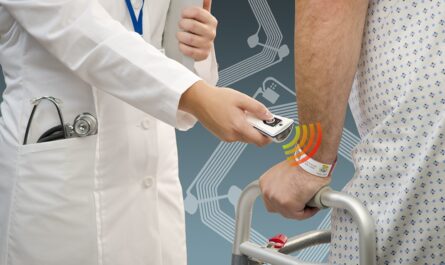Cardiovascular diseases remain one of the leading causes of mortality worldwide. Cardiac arrhythmias – abnormal heart rhythms – pose a serious risk if left undetected and untreated. Recent advancements in cardiac monitoring technologies now allow for improved detection of arrhythmias. This article explores some of the latest cardiac arrhythmia monitoring devices and how they are helping in improving patient outcomes.
Ambulatory Cardiac Monitoring
Ambulatory Cardiac Monitoring Devices provide a means for continuously monitoring the heart outside of a clinical setting. These portable devices can detect and record heart rhythm abnormalities over extended periods, from a few days up to a month. This allows physicians to identify arrhythmias that may not be present during occasional in-clinic checkups. Some of the commonly used ambulatory cardiac monitors include:
– Event monitors: Worn for 1-4 weeks, these lightweight monitors are activated by the patient when symptoms are felt to record and transmit ECG data to the doctor.
– Mobile cardiac telemetry (MCT) monitors: Integrated with cellular technology, these patch-like monitors transmit real-time ECG data to clinics for continuous remote monitoring. Any arrhythmias detected are promptly notified to physicians.
– Implantable loop recorders (ILR): For patients with infrequent or unpredictable symptoms, ILRs can be implanted surgically to continuously monitor the heart for up to 3 years. Data can be wirelessly downloaded during office visits.
– Patch monitors: A newer category, patch monitors stick to the skin like a bandage and wirelessly transmit multi-day cardiac recordings for detection of irregular heartbeats.
The availability of ambulatory monitors has enabled detection of arrhythmias that previously went unnoticed. This early detection allows for timely treatment interventions to avert potential complications.
In-Hospital Cardiac Telemetry Monitoring
For patients admitted with arrhythmia symptoms, in-hospital cardiac telemetry monitoring systems provide continuous ECG monitoring and analysis. These systems comprising multiple ECG electrodes, wireless transmitters, and bedside/central station monitors help physicians identify and analyze arrhythmias during a patient’s hospital stay.
Features such as automated arrhythmia detection alerts, multi-channel continuous waveforms, and arrhythmia episode review tools assist caregivers. Combined with telemetric capabilities, telemetry systems allow monitoring patients across hospital units from a central station. The continuous in-hospital monitoring aids better management of high-risk cardiac cases.
Implantable Cardiac Monitors and Defibrillators
For patients diagnosed with serious chronic arrhythmias, implantable cardiac devices provide long-term rhythm monitoring and treatment capabilities. Implantable loop monitors (ILR), mentioned earlier, represent a monitoring-only option. Other devices may also include arrhythmia treatment therapies:
– Implantable cardioverter-defibrillators (ICD): Used for abnormal heart rhythms like ventricular fibrillation and ventricular tachycardia that can cause cardiac arrest. An ICD monitors the heart rhythm continuously and delivers electric shocks as needed to restore normal rhythm.
– Cardiac resynchronization therapy defibrillators (CRT-D): For heart failure patients with conduction abnormalities, CRT-Ds not only provide shock therapies but also cardiac resynchronization pacing to improve heart pumping.
These implantable devices have revolutionized care for high-risk patients by enabling early detection of life-threatening arrhythmias anywhere, anytime followed by prompt treatment intervention through antitachycardia pacing or defibrillation shocks to prevent sudden cardiac death. The devices automate care and provide peace of mind for patients.
Future Directions in Cardiac Monitoring Technologies
Research continues towards developing novel cardiac monitoring modalities. Some emerging areas include:
– Non-invasive wearable sensors: Patches or smart garments integrated with dry electrode technology promise completely non-invasive cardiac monitoring without wires or adhesives.
– Remote monitoring networks: Use of telehealth platforms allows automated transmission of arrhythmia data from home monitors to clinics anytime, reducing need for facility visits.
– Artificial intelligence in ECG analysis: AI and machine learning offer potential for automated, more accurate identification of subtle arrhythmia patterns from long-term ECG data.
– Personalized monitoring based on arrhythmia risk: Future devices may tailor the type, duration, and frequency of monitoring based on an individual’s cardiac status and risk levels.
Conclusion
Advancements in cardiac arrhythmia monitoring technologies have enabled early detection of abnormal heart rhythms along with timely treatment. This is improving patient outcomes through prevention of complications from undetected arrhythmias. Widespread adoption of these efficient monitoring options holds promise to reduce cardiovascular disease burden worldwide in the years ahead.
*Note:
1. Source: Coherent Market Insights, Public sources, Desk research
2. We have leveraged AI tools to mine information and compile it



